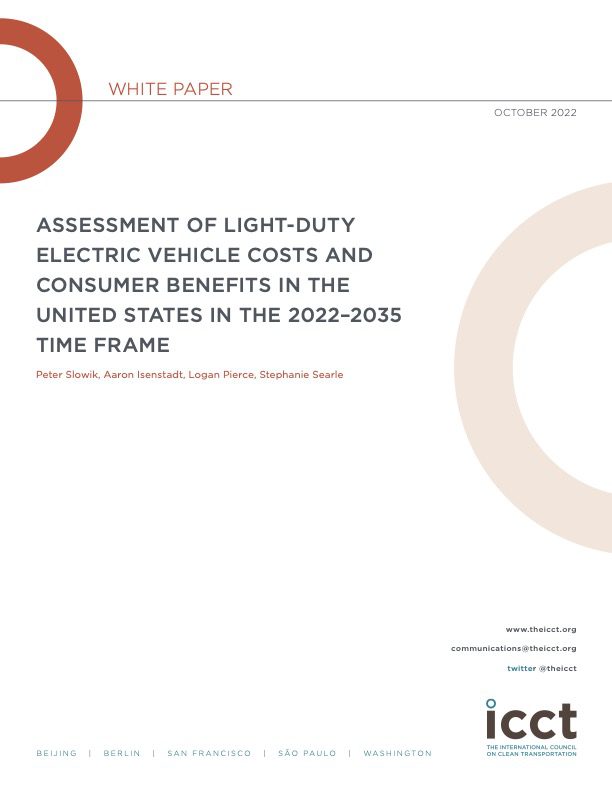Blog
No, EPA’s new emissions standards don’t ban gas cars
Over the months leading up to yesterday’s release of the U.S. Environmental Protection Agency (EPA)’s final multi-pollutant standards for new light-duty vehicles, the amount of misinformation, disinformation, and misleading headlines seemed higher than ever. Now that we have certainty about the final text, we can appreciate what the rule is, what it never was, and the benefits it will bring.
The rule does not mandate a shift to electric vehicles. Even though the American Fuel & Petrochemical Manufacturers association shelled out $7 million for an advertising campaign to try to convince Americans that the new standards are a “de facto ban on new gas cars,” that’s not true.
How the standards work
EPA’s final greenhouse gas standards require that automakers reduce emissions from new vehicles over model years 2027 through 2032. That’s it. There’s no mandate for a specific powertrain or fuel type, and automakers can comply however they chose. Indeed, there are numerous cost-effective technologies available today that reduce pollution from conventional combustion engine vehicles and there are also zero-emission technologies available. Automakers are free to deploy gasoline technologies like turbo, gasoline direct injection, cylinder deactivation, continuously variable transmissions, and 7+ gears to reduce the emissions of their fleets. They could also sell more non-plug in hybrids, plug-in hybrids, and battery electric and hydrogen fuel-cell electric vehicles. It’s up to them.
Doesn’t EPA expect this to result in a high sales share for battery electric vehicles (BEVs)?
Yes. While automakers don’t have to sell 56% BEVs in 2032, that’s what the EPA data and analysis indicate would be the most cost-effective compliance path. To estimate potential pathways that automakers could take to comply with the standards, EPA conducted a detailed cost analysis on a wide range of technologies, including the ones mentioned above. They found that a higher BEV pathway (i.e., selling more BEVs) is the most cost-effective option and thus automakers that manufacture and sell more BEVs would be expected to meet the standards at lower cost compared to those that don’t. Part of the reason for this is the billions of dollars in financial incentives made available for battery production and clean vehicle purchase in the Inflation Reduction Act (IRA), which is designed to strengthen the American economy and meet climate goals.
The ICCT’s own assessment of bottom-up vehicle component-level costs found similar. In our analysis, the upfront purchase price of new BEVs with 300 miles of range was found to reach parity with gasoline vehicles around 2028 without any federal or state incentives. And those who drive electric will realize economic benefits even before purchase price parity is reached. When considering all aspects of vehicle ownership such as maintenance and fuel/electricity, price parity is right around the corner across all light-duty vehicle classes, with many models already there. Moreover, a study done by Roush estimated that by 2030, the average cost of ownership per mile for a BEV in the United States will be “about 26% lower than that of an [internal combustion engine vehicle] in the base segment of all vehicle classes” and those who purchased a BEV in 2030 would reap about $15,000 in net savings over the lifetime of the vehicle compared with a combustion engine vehicle.
How the standards expand consumer choice
Despite AFPM assertions about policies “designed to limit consumer choice,” that will not be the result of these standards. Instead, they are expected to expand consumer choice by increasing the number of advanced combustion vehicle models and the number of plug-in hybrids and BEVs available for purchase. The number of plug-in electric vehicle models for sale in the United States has grown from fewer than 5 in 2010 to about 100 in 2023, and the data show that the number of electric vehicle models available tends to be highest in the states that have implemented clean car standards. Since 2010, as electric vehicle sales have shot up and electric vehicle model availability has sharply increased, the number of gasoline models for sale has also remained steady at approximately 1,100 and the number of gasoline models with advanced efficiency technologies has increased. This is a more dynamic market in which consumers can choose from a robust range of vehicles to meet their needs.
So, no, the EPA’s new standards aren’t a ban on gas cars. They don’t mandate any particular technology, but they are expected to be great for electric vehicle sales and for those who favor more choices for consumers. It’s a big deal, especially after the 2020 rollback of standards for model year 2021–2026 vehicles. Not only were those standards subsequently reinstated, but now we have new rules that take the United States into the next decade by supporting consumers and the environment. And considering the billions of dollars available for consumer incentives, industrial development, and charging infrastructure deployment in the IRA and Bipartisan Infrastructure Law, these new standards are achievable, feasible, and cost-effective.
Authors
Kelli Pennington
Global Communications Manager
Related Publications

Analyzes component-level costs to evaluate electric vehicle price parity with conventional vehicles.

